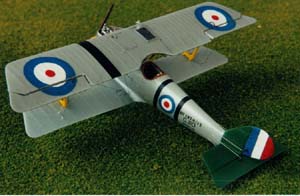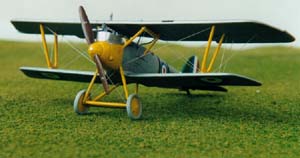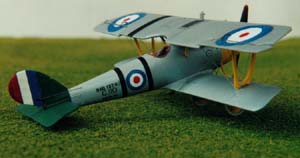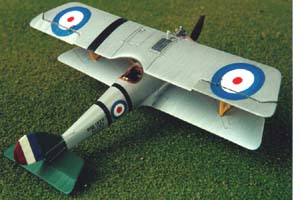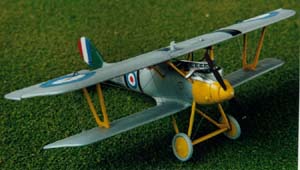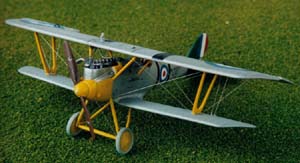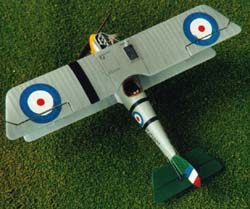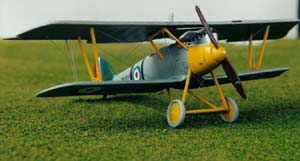Introduction The Pfalz D.III played a major role in the German air effort during the latter part of World War One. The Pfalz Flugzeugwerke GbmH, Speyer am Rhein began production of the Pfalz D.III in April 1917. After the prototype was produced in May 1917, it underwent a number of modifications before entering service in the summer of that year. In total, 260 Pfalz D.III fighters were built before the switch to the Pfalz D.IIIa. The kit In a previous edition of Internet Modeler, I described my build up of the MAC Pfalz D.IIIa. The Pfalz D.III is almost identical so I will not provide a detailed description of its build up in this article. Instead, I will focus on the differences between these kits. There are three main differences. First, the Pfalz D.III has its guns encased in the front fuselage. Second, the lower wing tips on the Pfalz D.III are pointed while those on the Pfalz D.IIIa are rounded. Third, the horizontal tail surface on the Pfalz D.III is smaller. Doubtless these differences were significant for those flying these aeroplanes, however, for the modeller, they make little difference in terms of construction. If anything, the location of the guns on the Pfalz D.III makes it slightly more straightforward to build. After purchasing my own MAC Pfalz D.III kit, I was presented with a review copy of the Pfalz D.IIIa and built Max Holtzem of Jasta 16's 'Comet'. Being so similar, the Pfalz D.III sat in the closet for a while. Inspiration came when my local IPMS chapter announced a contest entitled 'Stranger in a strange land', so I decided to build a version of the Pfalz D.III, specifically, Hecht's D.III 1370/17 captured by the British and given British markings. The nose, undercarriage and interplane struts are painted yellow, which was typical of Jasta 10 aeroplanes. The tail is dark green; there are black stripes around the fuselage and a black stripe atop the upper wing. The overall colour is silbergrau. Construction was identical to the Pfalz D.IIIa. I used Polly Scale Yellow for the nose and struts, Aeromaster Japanese Mitsubishi Navy Green for the tail, and Model Master Aluminum mixed with a touch of medium grey for the Silbergrau. I sprayed black paint onto decal paper and cut strips to make the wing and fuselage stripes. The RFC roundels and tail stripes are from Americal-Gryphon. One problem I had with the Americal-Gryphon decals was that the red part of the tail stripe appeared to be two-toned. This was easily fixed by carefully over-painting with Testors red enamel, although that was done after the photographs were taken for this article. I used a Hewlett Packard LaserJet IIIp to print the 'G.110 English No.' onto decal paper. Photographs of the captured 1370/17 show a 'G110' scrawled on the tail, however I found no way to represent this realistically; it remains a project for the future. Conclusion The MAC Pfalz D.III has the same strengths and weaknesses as its sister kit, the Pfalz D.IIIa. I recommend it for those who have built one or two biplane kits. Acknowledgements I would like to thank Matt Bittner and Volker Hausler for their invaluable help providing information on the Pfalz D.III. References -
R. L. Rimell 'Pfalz D.III Windsock Datafile 7.' Albatros Publications, Great Britain, 1997 -
R. L. Rimell 'Best of Windsock Volume 1' Albatros Publications, Great Britain, 1997. | 


 



  
    |
